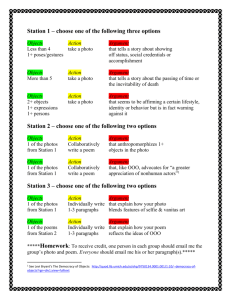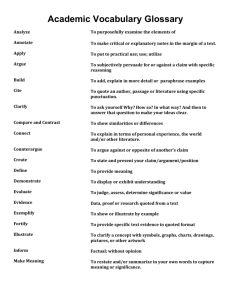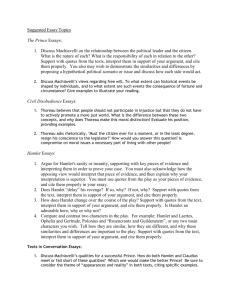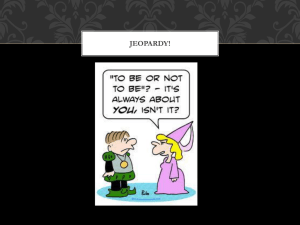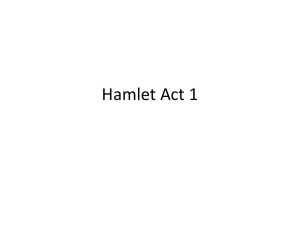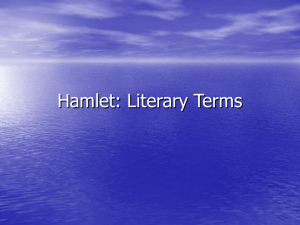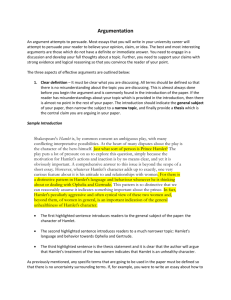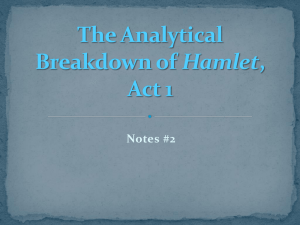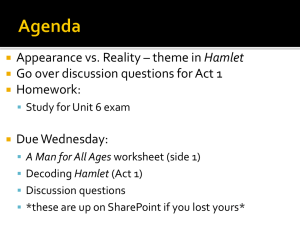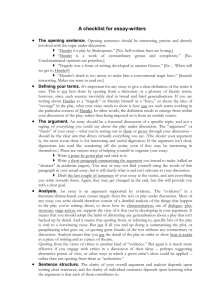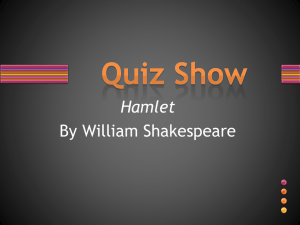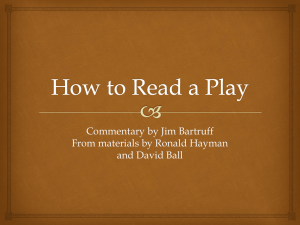The Rhetoric of Academic Writing-
advertisement
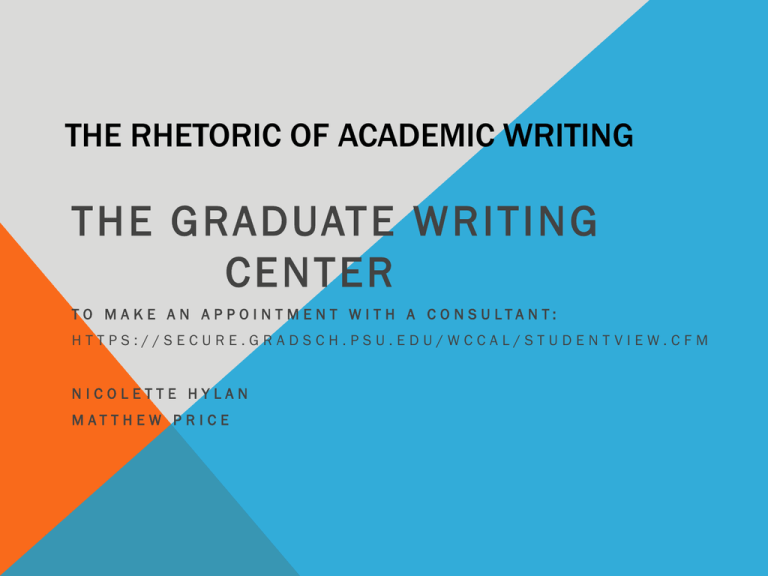
THE RHETORIC OF ACADEMIC WRITING T H E G R A DUAT E W R I T I N G C EN T ER TO M A K E A N A P P O I N T M E N T W I T H A C O N S U LTA N T: HTTPS://SECURE.GRADSCH.PSU.EDU/WCCAL/STUDENTVIEW.CFM NICOLETTE HYLAN M ATTHEW PR IC E RHETORIC “The artful blend of fact and opinion” Audience—what do they expect, know, already hold as an opinion? Ethos—what is your relationship to your audience and to your subject? What is your authority? Context—in what venue will your work be published or presented? Exigence—what is your reason for writing? RESEARCH ARTICLE Research articles contribute new knowledge to a particular field Introduction concerns: • Establish a question to answer, problem to solve • Answer the “so what?” question • Explain why filling the gap in previous research matters • State your thesis ORGANIZATION Organize your dolls! Metadiscourse: Authorial contract (promise) “In this paper, I aim (contend/argue)…” Textual features (signposts) “In order to understand A, one must first recognize B.” “Contrary to point A, I would like to suggest point B. Most importantly to my argument, A suggests…” COHERENCE Coherence denotes a sense of connection between individual sentences and paragraphs. It is achieved through the following strategies: • Strong topic sentences • Transition words and phrases • Style and readability STRONG TOPIC SENTENCES A topic sentence accomplishes the following tasks: 1. Expresses a claim (not a fact) that supports the larger thesis 2. Indicates the content of the paragraph 2. Creates a transition from the previous paragraph Example: “Although these critics have diagnosed Hamlet with indecision, his fatal flaw in fact lies in his hastiness.” STYLE AND READABILITY Active versus passive voice “Moby Dick is pursued by the monomaniacal Captain Ahab.” “Captain Ahab’s monomania drives him to pursue Moby Dick.” Weak linking verbs “Horatio Alger is an American writer who produced hundreds of popular novels for young boys.” “The American writer Horatio Alger produced hundreds of popular novels for young boys.” When to use “I” Open and close paragraphs with YOUR words, not quotes. Effective use of punctuation In the final scene, Hamlet reveals the truth: he has poisoned Claudius and himself. Hamlet ‘s famous soliloquy has elicited much critical commentary; it remains, however, difficult to interpret. The old king—Hamlet’s father—continues to haunt Hamlet throughout the play. TRANSITIONS Addition (furthermore, more importantly, additionally, moreover, similarly) Exemplification (One example of this ______, for instance) Opposition (on the other hand, conversely, in contrast) Similarity (Likewise, similarly, in the same way) Cause and effect (because of this ___, as a result, consequently, therefore, for that reason) Time order (subsequently, afterward, prior to this ___, consequently, previously) Avoid beginning with For, And, Nor, But, Or, Yet, So. See also: https://www.msu.edu/~jdowell/135/transw.html SCIENTIFIC RESEARCH PROPOSALS A scientific research proposal serves the following functions: • Outlines the goals, methods , disciplinary context , and significance of your proposed study • Convinces your scientific audience that the topic you propose to investigate is worth exploring • Persuades your audience that you will conduct your study in a sensible way • Demonstrates your familiarity with relevant research in the field and establishes that you are qualified to carry out the proposed research LITERATURE REVIEW A literature review charts the existing research on your topic(s) in a way that demonstrates the significance of your work to the broader field. It accomplishes the following tasks: • Provides background information on your topic • Establishes the importance of your topic to the field • Carves out a space for your work by highlighting weaknesses or gaps in the research • Identifies trends or major ideas in the research that you are building on, or that are necessary to understand your argument • Situates your work in relation to other prominent perspectives and methodologies BOOK REVIEW A book review briefly summarizes and evaluates a published scholarly work. Summarizing : • Outline central argument, evidence, and methodologies • Highlight important sections of the book • Connect to major debates in the field, or in the author’s other work Evaluating : • Assess quality of research, argument, methodology, prose style, and use of evidence •Measure the significance of the study to the broader field • Clarify implicit arguments or implications that may not be immediately clear ABSTRACTS (FOR CONFERENCES) Abstract for conferences should succinctly accomplish the following tasks: • Establish your object of study and main argument • Briefly detail your methodology and use of evidence • Contextualize your study within the broader field • Establish your work’s importance to that field REACTION PAPERS Reaction papers require you to analyze, synthesize, and/or critically respond to a reading assignment. You might approach this assignment in one of the following ways: • Identify what was most valuable or interesting about the reading. • Offer a critical evaluation of the central argument or methodology • Trace an idea that emerges in the text, and elaborate the significance of that idea. • Explain how this reading relates to other works you’ve read in the course IDENTIFY RHETORICAL AND STYLISTIC WEAKNESSES IN THE FOLLOWING PARAGRAPH, AND SUGGEST METHODS FOR REVISION: “Foam applications” is the phrase used to describe the process that applies additives to a moving paper web as foam. This process has many advantages over conventional liquid applications. Two problems have hindered the progress of this new technology. The process must be established in the paper industry. The speed limits encountered in the current application technology must be increased in order to expand the number of paper machines that can potentially use foam. The development work run at the Placerville plant is attacking both of these problem areas, and this report summarizes the achievements that have been accomplished there during the year.
